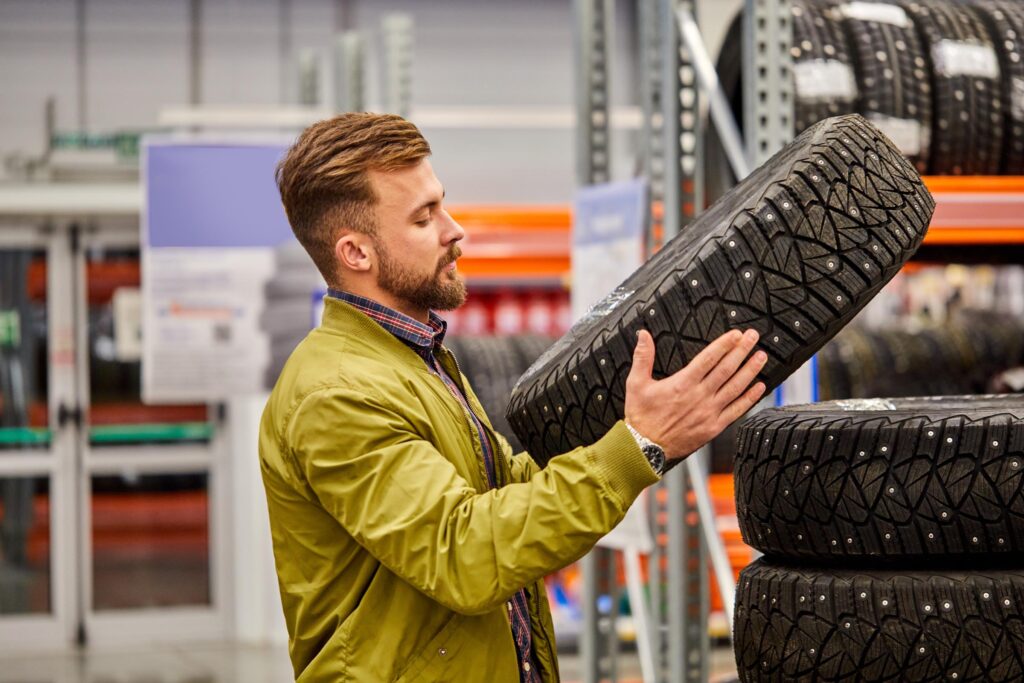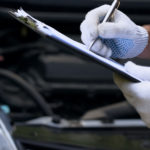“Fishtailing” is dangerous, whether you’re on a crowded freeway or alone on the road. So you must know what causes it and how to avoid them to improve your safety on the road.
What Is Fishtailing?
Fishtailing happens when your rear tires lose traction and the rear of the car begins to slide to the outboard side of a curve. Experienced drivers will typically steer into the turn, which is the right thing to do, but in some cases, it can cause the rear of the car to overcorrect in the opposite direction, and the cycle repeats itself with the rear of the car sweeping back and forth.
Modern vehicles have active stability systems that can detect a skid and apply the brake to the one wheel that can correct the skid. Older cars won’t have this feature, or, if that system is inoperative on a newer car, fishtailing and spin-outs are more likely.

What Causes Car Fishtailing?
Here are the most common reasons why vehicle fishtails:
Low-Friction Road Surfaces
Slippery roads due to snow and rain can cause your rear wheels to lose traction. They can cause the rear wheels to lose grip on the road, causing your vehicle to move sideways instead of forward.
Worn Tires on the Rear
Worn tires on the rear is a very common cause of fishtailing when the road is slippery, particularly on curves at highway speed.
Whether two tires are being replaced or even if the tires are being rotated, the tires with the best tread should, according to all tire manufactures, be placed on the rear of the vehicle to minimize spinouts and fishtailing. While some people believe otherwise, tire manufacturers all agree this is the best practice.
Tire Type
The type of tire you have installed on your vehicle does not directly cause car fishtailing, but it can impact how frequently your vehicle loses traction.
All-terrain tires, for example, usually provide adequate traction on all types of surfaces. Meanwhile, winter tires offer more traction on roads covered with ice or snow.
Tire Age
Old tires often have little to no tread thread, making them more susceptible to fishtail skids.
Heavy Cargo
Heavy loads in the rear of your vehicle can cause reduced steering and increase the risk of fishtailing, so don’t carry heavy cargo when the roads are slippery.
If you can’t avoid it, equally distribute the load to help ease pressure on the rear.
Speed
High speed can generally cause less traction and grip. So if you’re traveling on low-fiction terrains, check your speed.
What to Do When Your Car Fishtails
Keep these tips in mind while driving so you’ll know what to do if your vehicle starts fishtailing.

Stay Focused
It’s easy to panic when you start to lose control of your vehicle, but it’s vital that you don’t. Keep calm and composed so that you can focus on preventing disaster.
Ease Off the Accelerator
Once the rear end of your vehicle starts to move back and forth, step off the gas pedal to stop accelerating.
Turn In the Direction of the Skid
For example, turn your steering wheel to the right if your vehicle sways to the right. Don’t fight the direction because that will only make it harder to regain control of your ride.
Gently Step on the Brakes
Slowly press your brakes. Experts advise applying steady pressure on the brakes if your vehicle has an anti-lock braking system (ABS).
Helpful Tips to Avoid Fishtailing
Fishtailing can lead to accidents on the road, so it’s crucial to do everything you can to prevent it. Monitoring your speed, avoiding sudden brakes, and focusing on tire care are ways to prevent it from happening to your car.
Let’s discuss each tip in detail:
Monitor Your Speed
When it’s snowing or raining heavily, check your speed. Slow down when you’re making a turn. Aside from fishtailing, driving at moderate speeds can also prevent other road accidents.
Avoid Sudden Braking
When you’re on a busy street, keep a safe distance between your car and the car ahead of you to avoid the need to slam on the brakes.
Make Tire Care Your Priority
The condition of your tires plays a significant role in your safety while on the road. So make sure that you replace your worn-out tires as soon as possible. Tires that lack traction can make you vulnerable to road accidents.
How to Choose the Best Tires for Your Ride

To help you avoid situations like fishtailing or over-skidding, invest in the best tires that fit your needs and lifestyle. Here are some factors to consider when shopping for new tires.
Tire Size
Make sure that you get the tires in the correct size. If you’re unsure about the tire size that fits your make and model, consult your owner’s manual. You can also ask your trusted mechanic for advice.
Tire Type
Determine which type of tire best fits your needs. Here are the most common tire types out on the market:
All-Season Tires
All-season tires provide a good grip on different road surfaces and terrains. If you’re using your car as a daily driver, these tires can work for you. They’re designed and configured for most driving conditions.
Summer Tires
The tread of summer tires is specially configured for dry and wet roads. However, it’s not advisable for cold climates.
Winter Tires
As its name suggests, winter tires are designed for snow and ice-covered terrains. The rubber material used in the tread of winter tires maintains flexibility in cold weather.
Brand
It’s also essential to find a brand you can trust regarding vehicle components like your tires. There are many aftermarket brands out there that produce high-quality tires, so you’ll usually not have any problem finding a replacement.
If you don’t have a go-to brand, browse product review pages to get an idea about a specific brand or product.
Pricing
High-quality tires don’t have to be pricey. Many OE-grade tires come at affordable prices. All you need to do to guarantee their quality is to source them from legitimate sources.
Getting the right set of tires can help avoid fishtailing—but prevention doesn’t end there. Aside from the condition of your tires and other parts contributing to road traction and control, you must also practice safe driving, especially when driving through complex terrains.
Where to Get New Tires for Your Vehicle
Fishtailing is the last thing anybody would want to happen to their vehicle. And if you’re one of those people, you’ll want to keep an eye out for your rear tires occasionally. Make sure to replace your worn-out tires as soon as possible to reduce the risk of getting into an accident due to fishtailing.
Treat your vehicle to a set of high-quality tires here at CarParts.com. We have a great selection of tires that come as direct-fit replacements for your old ones. Precision-engineered by a team of professionals, our replacement tires passed the highest quality control standards from the most trusted names in the industry. You’ll never have to settle for subpar tires when you shop from us.
Enter your vehicle’s specifications into our vehicle selector to start browsing our tire catalog. You can also use the search filters to narrow down the results according to your preferred brand, price range, quantity, and more.
Find only the best deals here at CarParts.com. All our products come with a low-price and lifetime replacement guarantee, helping you get the best value for your money.
Check out our products today, and get your order delivered straight to your doorstep in as fast as two business days.
Any information provided on this Website is for informational purposes only and is not intended to replace consultation with a professional mechanic. The accuracy and timeliness of the information may change from the time of publication.






























